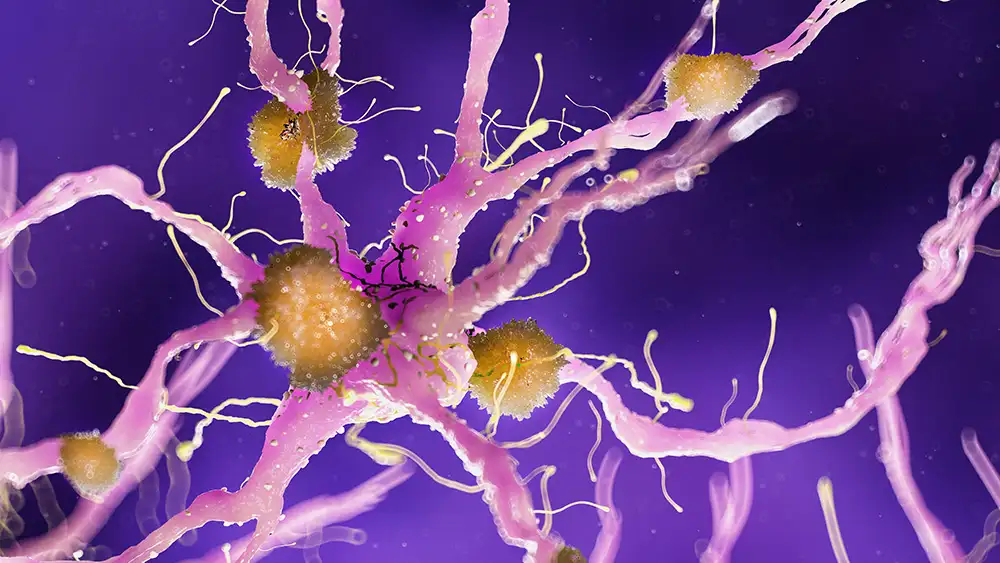Autism Spectrum Disorder (ASD) is a prevalent neurodevelopmental disorder that affects individuals worldwide. According to the Centers for Disease Control and Prevention (CDC), approximately 1 in 68 children in the United States has been diagnosed with ASD. The World Health Organization (WHO) estimates that globally, 1 in 160 children has ASD. These statistics highlight the significant impact that ASD has on individuals, families, and communities worldwide. As research into the causes and management of ASD continues, it is important to recognize the prevalence and impact of this disorder on a global scale.
Classification and Characteristics
Autism Spectrum Disorder (ASD) is a complex neurodevelopmental disorder that affects social interaction, communication, and behavior. It is a spectrum disorder, meaning that there is a wide range of symptoms and severity. The diagnostic criteria for autism have undergone significant changes in recent years, with the adoption of the spectrum model and the release of the International Classification of Diseases, 11th Revision (ICD-11) and the Diagnostic and Statistical Manual of Mental Disorders, 5th Edition, Text Revision (DSM-5-TR).
The spectrum model emphasizes the variability of autism symptoms, rather than focusing on a narrow range of traits. The ICD-11 classification includes autism as a standalone disorder and emphasizes the need to assess social communication, behavior, and restricted interests and repetitive behaviors. The DSM-5-TR criteria emphasize the importance of assessing the severity of social communication deficits, repetitive behaviors, and interests, and the impact of these symptoms on daily functioning.
Before a diagnosis is made, individuals may exhibit the broader autism phenotype (BAP), which includes subtle difficulties in social interaction, communication, and restricted interests and repetitive behaviors. These traits may be present in family members of individuals with autism, but may not be severe enough to meet the criteria for a diagnosis.
The hallmark characteristics of autism are social communication deficits, restricted interests and repetitive behaviors. Individuals with autism may have difficulty with nonverbal communication, such as maintaining eye contact and using gestures. They may also have difficulty with social reciprocity, such as understanding social cues and responding appropriately. Restricted interests and repetitive behaviors can manifest as intense interests in specific topics or objects, as well as ritualistic behaviors, such as repetitive movements or insistence on sameness.
Causes of Autism
Autism is a complex disorder with no single known cause. Genetic studies have identified a variety of genetic variations and mutations associated with autism, including mutations in genes that control brain development and function, such as the SHANK3, NLGN4X, and NRXN1 genes. However, these genetic variations and mutations are relatively rare and do not account for all cases of autism.
Environmental factors are also thought to play a role in the development of autism. For example, some studies have suggested that prenatal exposure to certain infectious agents, such as rubella, may increase the risk of autism. Additionally, maternal obesity, gestational diabetes, and malnutrition have been associated with an increased risk of autism in some studies. Similarly, maternal exposure to certain chemicals, such as lead and mercury, has been linked to an increased risk of autism in some studies.
Other factors that have been associated with an increased risk of autism include prenatal stress, autoimmune and inflammatory diseases, and vitamin D deficiency. However, it is important to note that the contribution of each of these factors to the development of autism is complex and not fully understood. Additionally, it is likely that multiple factors, both genetic and environmental, interact to cause autism.
While the causes of autism are not fully understood, research into the disorder is ongoing. As scientists continue to study the genetic and environmental factors that contribute to autism, it is hoped that new insights will be gained into the disorder’s causes and potential treatments.
Disproven Vaccine Hypothesis
The vaccine hypothesis of autism emerged in the late 1990s when a now-retracted study published in The Lancet suggested a link between the MMR vaccine and autism. This study, led by Andrew Wakefield, has since been discredited due to serious methodological flaws, conflicts of interest, and fraudulent data. Further research has consistently found no evidence of a link between vaccines and autism. In fact, numerous large-scale studies conducted around the world have shown that vaccines, including the MMR vaccine, do not cause autism. The Centers for Disease Control and Prevention (CDC), the World Health Organization (WHO), and other reputable health organizations strongly recommend vaccination as a safe and effective way to prevent infectious diseases. The perpetuation of the vaccine hypothesis has led to the spread of misinformation and mistrust in vaccines, leading to preventable outbreaks of infectious diseases and harm to public health.
ASD Pathophysiology
The pathophysiology of autism is a complex and multifaceted area of research that is not yet fully understood. A large body of evidence indicates that there are differences in brain connectivity in individuals with autism, with increased connectivity observed within certain brain regions and decreased connectivity between different brain regions. Studies have also revealed molecular and cellular abnormalities in the brains of individuals with autism, particularly in synaptic development, neurotransmitter signaling, and neuroinflammation. In addition, there are several other theories regarding the pathophysiology of autism, including the gut-immune-brain axis dysfunction theory, which suggests a link between the gastrointestinal system and the central nervous system in autism, temporal lobe functionality deficits, mitochondrial disease, and the serotonin hypothesis of autism. The serotonin hypothesis proposes that the dysregulation of the serotonin system may contribute to the development of autism. Despite these theories, the exact pathophysiological mechanisms that underlie autism remain to be fully elucidated.
Diagnosing and screening for autism involves assessing social communication, restricted interests and repetitive behaviors, and the impact of these symptoms on daily functioning. Misdiagnosis is a concern, as the symptoms of autism can overlap with those of other disorders, such as attention-deficit/hyperactivity disorder (ADHD) and anxiety disorders. Comorbidities, such as intellectual disability, epilepsy, and sleep disorders, are also common in individuals with autism.
Management of Autism
Management of autism involves a variety of approaches, including non-pharmacologic interventions such as behavioral and educational interventions, speech and language therapy, and occupational therapy.
Non-pharmacological interventions are an essential part of the treatment of autism spectrum disorder (ASD). Behavioral therapy is often the primary intervention used to help individuals with autism improve their communication, social skills, and behavior. This type of therapy is based on principles of applied behavior analysis and focuses on teaching specific skills, such as language, social communication, and self-help skills. Speech and language therapy is another common intervention for individuals with autism, which focuses on improving language development, communication, and social interaction.
Social skills training aims to help individuals with autism develop social skills and interact with others more effectively. This therapy may include group sessions or individual sessions with a therapist, and may cover topics such as turn-taking, initiating conversation, and understanding nonverbal cues. Occupational therapy is also used to help individuals with autism develop the skills needed to perform everyday tasks, such as dressing, eating, and grooming. Sensory integration therapy is designed to help individuals with autism process sensory information more effectively, and can help to reduce sensory-related behaviors such as hyperactivity or self-stimulatory behaviors.
Alternative therapies such as acupuncture, music therapy, and animal-assisted therapy have also been used in the management of autism, although their efficacy remains uncertain. Acupuncture is a traditional Chinese medicine technique that involves inserting fine needles into specific points on the body, which may help to alleviate some symptoms of autism such as hyperactivity and anxiety. Music therapy involves using music to improve communication, social interaction, and behavior, and may include singing, playing musical instruments, and listening to music. Animal-assisted therapy involves working with animals, such as dogs or horses, to help individuals with autism develop social skills, improve communication, and reduce anxiety. While these therapies may be helpful for some individuals with autism, there is limited scientific evidence to support their effectiveness, and they should always be used in conjunction with evidence-based interventions.
Pharmacologic Interventions and Prevention
Pharmacological interventions can be an effective treatment option for some individuals with autism, especially when non-pharmacological interventions have not provided sufficient relief. These interventions focus on managing specific symptoms of autism, such as aggression, anxiety, and hyperactivity. Antipsychotics, such as risperidone and aripiprazole, may be prescribed to reduce irritability and aggression in individuals with autism. Antidepressants, such as selective serotonin reuptake inhibitors (SSRIs), may be prescribed to manage anxiety and depression. Stimulant medications, such as methylphenidate and amphetamines, may be prescribed to manage hyperactivity and inattention in individuals with autism.
However, the use of pharmacological interventions in autism must be carefully monitored, as they can cause significant side effects. Antipsychotics, for example, can cause weight gain, metabolic problems, and movement disorders. Antidepressants may increase the risk of suicidal thoughts and behaviors in some individuals. Stimulant medications can cause sleep problems, loss of appetite, and growth suppression. Therefore, the decision to use pharmacological interventions should be made on a case-by-case basis, taking into account the potential benefits and risks.
In addition to pharmacological interventions, preventive measures may also play a role in reducing the risk of autism. Folic acid supplementation during pregnancy has been shown to reduce the risk of autism, and avoiding exposure to environmental toxins, such as lead and pesticides, may also be beneficial. However, more research is needed in this area to fully understand the impact of preventive measures on the risk of autism.
Autism in the Society
While the scientific understanding of autism continues to evolve, it is important to consider the societal and cultural aspects of autism as well. Historically, autistic individuals have faced stigmatization, marginalization, and discrimination, and many have struggled to access necessary support and services. However, in recent years, the neurodiversity movement has emerged as a powerful force for change. This movement emphasizes the value of neurodivergent individuals and recognizes that autism is not a disease or a tragedy, but a unique and valuable way of being in the world. The neurodiversity movement advocates for the rights of autistic individuals and seeks to create a more inclusive and accepting society. By challenging negative stereotypes and promoting a more positive and respectful view of autism, this movement offers a promising vision for a more equitable and just world. However, there is still much work to be done to ensure that all individuals with autism are able to access the support, resources, and opportunities they need to thrive.
Subscribe
to get our
LATEST NEWS
Related Posts

Neuroscience & Neuropharmacology
Sygnature Discovery Revolutionizes Neuroinflammation Research with In Vivo LPS Model
Innovative LPS model unveils new possibilities for understanding life-limiting neuroinflammatory conditions.

Neuroscience & Neuropharmacology
Unveiling Alzheimer’s Complexity: Decoding the Elusive Amyloid Beta Fibrils
Lecanemab found to confer shielding effect against detrimental effects of unbound amyloid beta fibrils.
Read More Articles
Synthetic Chemistry’s Potential in Deciphering Antimicrobial Peptides
The saga of antimicrobial peptides unfolds as a testament to scientific ingenuity and therapeutic resilience.












